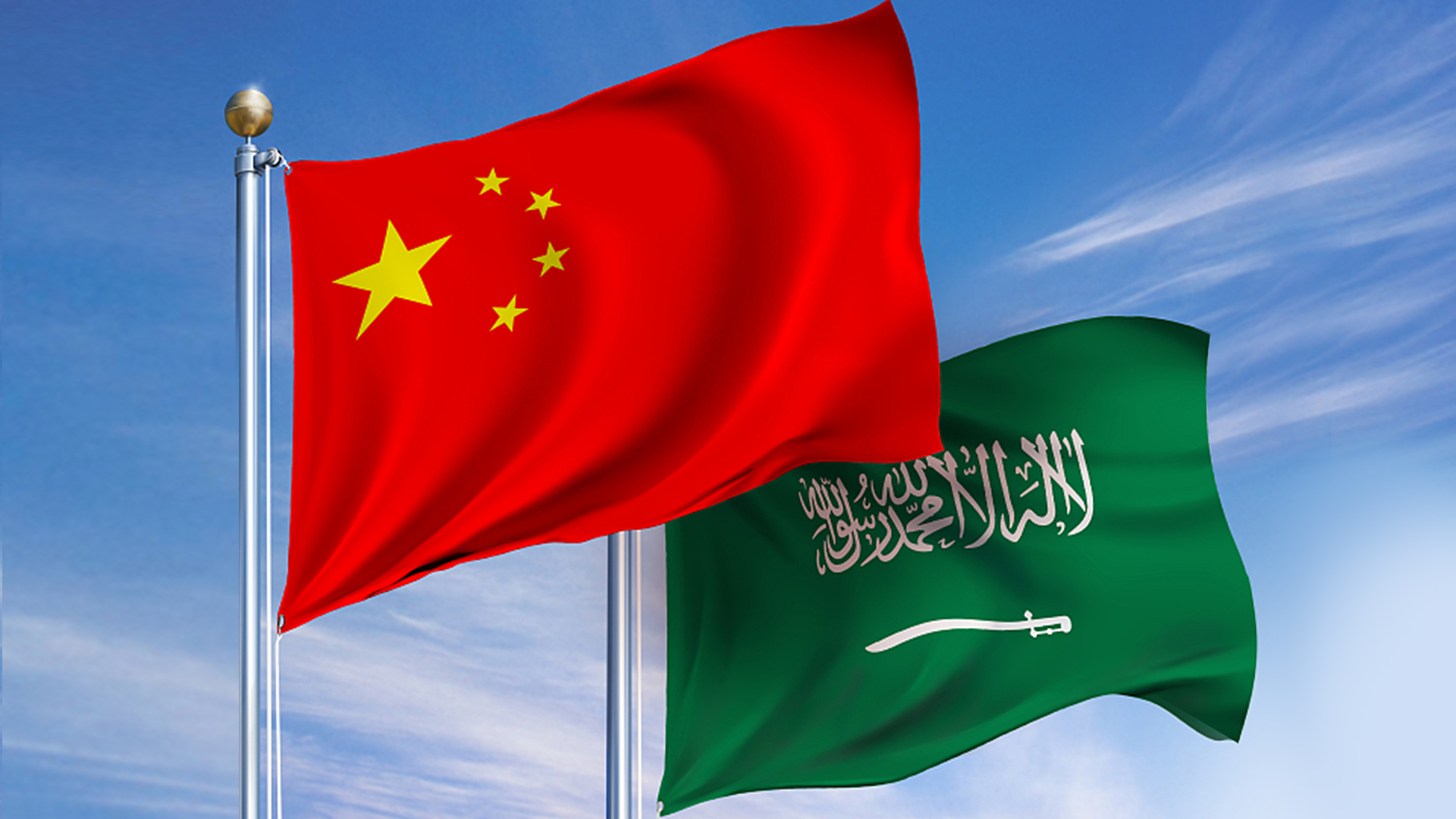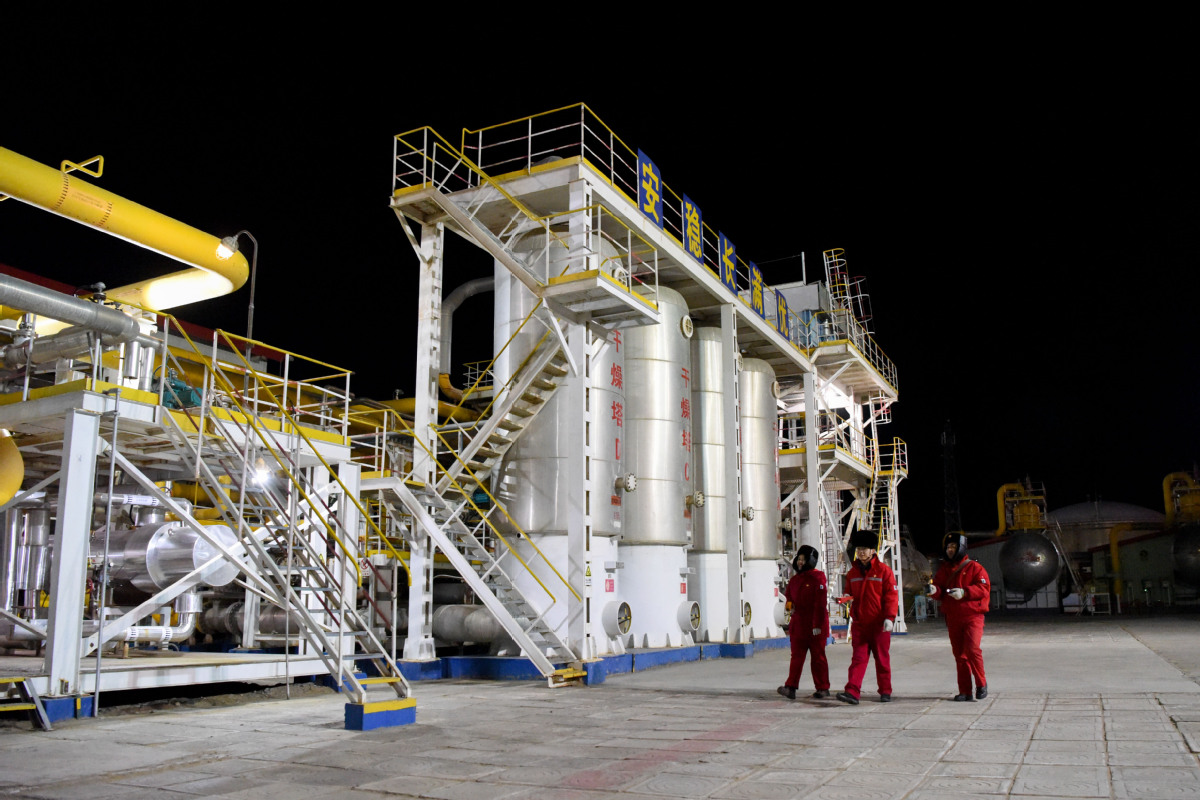
Editor's note: Liu Chunsheng is an associate professor at the Beijing-based Central University of Finance and Economics. The article reflects the author's opinion, and not necessarily the views of CGTN.
Saudi Arabia is the largest economy in the Middle East, the transportation hub connecting Asia, Europe and Africa, the main source country of China's oil imports and one of the important countries of the Belt and Road Initiative (BRI).
In February 2019, when visiting Pakistan, Saudi Arabian Crown Prince Mohammed bin Salman Al Saud announced that Saudi Arabia would invest $10 billion in Gwadar Port to build large-scale oil refining and petrochemical facilities. The third party cooperation between China and Saudi Arabia under the framework of the BRI has been realized.
The economic structures of China and Saudi Arabia are complementary, and the importance of bilateral trade between the two countries is obvious. Since the establishment of diplomatic ties between China and Saudi Arabia, relations in various fields have developed rapidly, political relations have strengthened, and economic cooperation has gotten much closer.
In March 2017, Saudi King Salman bin Abdulaziz Al Saud visited China, and the two sides have reached consensus in many aspects, pushing China-Saudi Arabia trade cooperation to a new height. Saudi Arabia remains China's largest trading partner in the Arab countries for years. China has been Saudi Arabia's largest trading partner since 2013 and Saudi Arabia's major oil importer for a long time.
By 2021, the extensive cooperation between China and Saudi Arabia in energy, production capacity, equipment manufacturing, trade, investment, finance, science and technology, security, policy communication and other fields has progressed smoothly.
There is much room for development in the future economic and trade cooperation. The two sides should promote their coordination, the establishment of free trade area, strengthen trade and investment, accelerate tariff reductions and exemptions, customs clearance facilitation, commodity inspection, food safety, certification and standardization management, transparency of laws and regulations, industrial cooperation, and enterprise cooperation.
With the rapid growth of its economy, China needs Saudi Arabia to provide stable petroleum energy, and Saudi Arabia also needs China as a stable consumer market. This has become the basis for the two countries to carry out energy strategic cooperation and achieve mutual benefits and win-win results.

File photo shows that technicians inspect an oilfield in the Tarim Basin, Xinjiang Uygur Autonomous Region, SW China. /Xinhua
File photo shows that technicians inspect an oilfield in the Tarim Basin, Xinjiang Uygur Autonomous Region, SW China. /Xinhua
China-Saudi Arabia energy cooperation should not only strengthen oil trade, but also develop towards bilateral investment cooperation, oil exploration, mining, smelting, oil derivatives and other upstream and downstream industries. Only by forming an investment cooperation relationship with Saudi Arabia in all aspects of the upstream and downstream industrial chain of oil can China ensure the security of oil energy supply.
Saudi Arabia may be considering using Chinese yuan in crude oil transactions with Chinese buyers. Considering that Iran, Venezuela, Russia and other oil producing countries have started to pilot yuan settlement of oil, the time is ripe for oil producing countries in the Middle East to use yuan to settle oildeals.
At present, yuan crude oil futures have developed into the third largest crude oil futures in the world, and the function of yuan pricing power has emerged in the Asian and European markets. The increase in the share of petroleum in yuan will contribute to the yuan settlement of cross-border trade and the internationalization of yuan. The People's Bank of China recently said that in 2021, the amount of cross-border receipts and payments of yuan between China and countries along the BRI reached 5.42 trillion yuan ($780 billion), up 19.6 percent year on year.
In 2021, China and the countries along the Belt and Road accounted for 14.8 percent of the total cross-border receipts and payments of yuan in the same period, and the cross-border receipts and payments of China and the countries along the Belt and Road in the field of goods trade and direct investment increased by 14.7 percent and 43.4 percent respectively year on year.
By the end of 2021, China had signed bilateral currency swap agreements with 22 countries and established yuan clearing mechanism arrangements in eight countries along the Belt and Road. The construction of the Belt and Road has provided opportunities and created good conditions for the internationalization of Chinese yuan.
The Chinese yuan settlement of cross-border trade also helps oil exporting countries, including Saudi Arabia, to diversify theirs risks brought about by fluctuations in the U.S. dollar exchange rate and the spillover effects of U.S. monetary policy.
(If you want to contribute and have specific expertise, please contact us at opinions@cgtn.com. Follow @thouse_opinions on Twitter to discover the latest commentaries in the CGTN Opinion Section.)